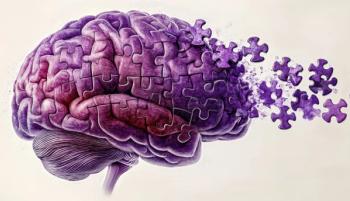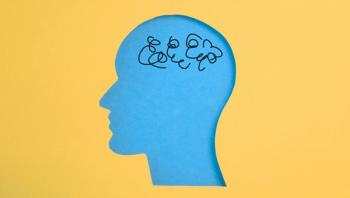
- Vol 40, Issue 3
Lewy Body Dementia: Unpacking a Neuropsychiatric Enigma
In this CME, learn the current criteria, unique diagnostic biomarkers, and differential diagnosis of Lewy body dementia.
CATEGORY 1 CME
Premiere Date: March 20, 2023
Expiration Date: September 20, 2024
This activity offers CE credits for:
1. Physicians (CME)
2. Other
All other clinicians either will receive a CME Attendance Certificate or may choose any of the types of CE credit being offered.
ACTIVITY GOAL
The goal of this activity is to learn the current criteria, unique diagnostic biomarkers, and differential diagnosis of Lewy body dementia (LBD), as well as how to maintain a high index of suspicion in questionable cases, to ensure an accurate diagnosis.
LEARNING OBJECTIVES
1. Understand the unique psychopathology associated with LBD.
2. Understand the diagnostic issues for LBD.
TARGET AUDIENCE
This accredited continuing education (CE) activity is intended for psychiatrists, psychologists, primary care physicians, physician assistants, nurse practitioners, and other health care professionals seeking to improve the care of patients with mental health disorders.
ACCREDITATION/CREDIT DESIGNATION/FINANCIAL SUPPORT
This activity has been planned and implemented in accordance with the accreditation requirements and policies of the Accreditation Council for Continuing Medical Education (ACCME) through the joint providership of Physicians’ Education Resource®, LLC, and Psychiatric Times™. Physicians’ Education Resource®, LLC, is accredited by the ACCME to provide continuing medical education for physicians.
Physicians’ Education Resource®, LLC, designates this enduring material for a maximum of 1.5 AMA PRA Category 1 Credits™. Physicians should claim only the credit commensurate with the extent of their participation in the activity.
This activity is funded entirely by Physicians’ Education Resource®, LLC. No commercial support was received.
OFF-LABEL DISCLOSURE/DISCLAIMER
This accredited CE activity may or may not discuss investigational, unapproved, or off-label use of drugs. Participants are advised to consult prescribing information for any products discussed. The information provided in this accredited CE activity is for continuing medical education purposes only and is not meant to substitute for the independent clinical judgment of a physician relative to diagnostic or treatment options for a specific patient’s medical condition. The opinions expressed in the content are solely those of the individual faculty members and do not reflect those of Physicians’ Education Resource®, LLC.
FACULTY, STAFF, AND PLANNERS’ DISCLOSURES AND CONFLICT OF INTEREST (COI) MITIGATION
None of the staff of Physicians’ Education Resource®, LLC, or Psychiatric Times™ or the planners of this educational activity have relevant financial relationship(s) to disclose with ineligible companies whose primary business is producing, marketing, selling, reselling, or distributing health care products used by or on patients. Dr Aga and the peer reviewer note they have nothing to disclose regarding this article.
For content-related questions, email us at
HOW TO CLAIM CREDIT
Once you have read the article, please use the following URL to evaluate and request credit:
To better understand Lewy body dementia (LBD), it is essential for clinicians to understand the potentially confusing terminology used in its diagnosis—and understanding the terminology means understanding the biology. Misfolded aggregates of the abundant physiological presynaptic protein α-synuclein in the somatodendritic compartment of neurons and glial cells form the basis of a group of disorders called the synucleinopathies.1 In the Lewy-type α-synucleinopathies, α-synuclein aggregates in the neurons (Lewy bodies) and neuronal processes (Lewy neurites), but the synucleinopathies also include non-Lewy glial cytoplasmic inclusions, axonal spheroids, and other cytoplasmic neuronal inclusions.1
In idiopathic
The term atypical parkinsonian syndrome (APS) refers to several disorders, each of which usually presents with parkinsonism with varying pathology. Among the disorders classified as APS are progressive supranuclear palsy (PSP) and corticobasal degeneration (CBD), which are both tauopathies, and the preganglionic non–Lewy-type synucleinopathy multisystem atrophy (MSA).
Finally, mixed pathologies are common in the neurodegenerative dementias. Cooccurring
The “1-year rule” is used to distinguish DLB from PDD. If cognitive symptoms emerge at the same time or at least 1 year before movement problems, the diagnosis is DLB, whereas PDD is diagnosed when cognitive impairment occurs more than 1 year after the onset of parkinsonism. The 2015 Movement Disorders Society (MDS) clinical diagnostic criteria for PD recommended making a diagnosis of PD regardless of the presence or absence of
Three phases in the evolution of the neurodegenerative dementias are now generally accepted:
1. prodromal/preclinical, including subjective cognitive decline,
2. mild cognitive impairment (MCI; objective cognitive impairment without functional decline), and
3. dementia (objective cognitive and functional decline).
Since most of the research in LBD has been done using the older clinical constructs of MCI and dementia, this article uses these terms instead of the newer, but not quite synonymous, constructs of major and mild neurocognitive disorder.6 A further discussion of the predementia stages of PD and DLB is outside the scope of this article, except to note that the most common cognitive phenotype of Lewy body disease in the MCI stage is nonamnestic. Unlike amnestic patients who revert to normal cognition, nonamnestic patients who revert to normal cognition do not appear to normalize their risk of progression to dementia.7,8 These clinicopathologic concepts are presented schematically in the
How Common Is LBD?
In community-dwelling patients with dementia 65 years and older, the point prevalence of DLB is around 10%,9 with the highest prevalence in those aged 80 to 89 years.10 PDD accounts for 3% to 4% of the dementias in the community,11 and almost all patients with PD will develop cognitive impairment if they live long enough.8 Some 20% of community-dwelling patients with PD are in the MCI stage at initial diagnosis, and they progress to dementia at an annual rate of around 10%.8 LBD is more common in men than in women.
Unpacking the Clinical Features
LBD is best understood as a systemic disease with
Deficits can be present in several cognitive domains. Attention is not only impaired but may also fluctuate during the day and from day to day (fluctuating cognition), and information about deficits can be elicited from patients or caregivers by inquiring about spontaneous changes in attention or consciousness, including staring spells, daytime drowsiness or lethargy, and periods of
Three components of
Visuospatial deficits include impairment in visuospatial orientation, perception, and construction. Studies have found minimal, if any, differences in visuospatial impairment between DLB and PDD on neuropsychological testing.13,14
Although the deficits in LBD are primarily subcortical, deficits in the cortical domains (memory, language) have also been reported in about one-third of those with PDD and one-quarter of those with DLB living in the community.15 Unlike in AD dementia, the amnestic disorder in LBD is not of the hippocampal type (ie, the memory deficit usually improves with cueing). The 2007 PDD criteria clearly state this and include
Behavioral symptoms in both sets of diagnostic criteria include psychotic and mood symptoms. The most common psychotic symptoms in Lewy body disease are
Rapid eye movement (REM)-sleep behavior disorder (RBD) is a REM-sleep
Regarding motor symptoms, the diagnosis of PD (bradykinesia with either rest tremor or rigidity, or both) is essential to diagnosing PDD.20 Although the postural-instability gait difficulty (PIGD) and tremor-dominant subtypes are equally represented in PD, PIGD has been reported in almost 90% of patients with PDD in cross-sectional studies.21 Spontaneous parkinsonism (one or more of bradykinesia, rest tremor, or rigidity—a lower threshold than for the diagnosis of PD) is a core clinical feature of DLB, but it is absent in around 15% of patients. Axial symptoms are more common than rest tremor in DLB with parkinsonism, and cross-sectional studies have similarly found an overrepresentation of the PIGD subtype in almost 70% of patients with DLB.21
Finally, severe antipsychotic sensitivity in DLB deserves a mention. Two patterns of neuroleptic sensitivity have been reported, each in about 50% of patients.22 Exaggerated extrapyramidal symptoms with onset shortly after receiving neuroleptics can reverse upon reducing the dose, on stopping the treatment, or after treatment with anticholinergics. On the other hand, a severe sensitivity reaction—such as sudden onset of sedation, increased confusion, rigidity, immobility, and neuroleptic malignant syndrome—can often be fatal. Severe neuroleptic sensitivity was downgraded to a supportive clinical feature in 2017 since “reduced prescribing of D2 receptor blocking antipsychotics in DLB limits its diagnostic usefulness.”5
Both core diagnostic features—the presence of a preexisting diagnosis of PD, and a dementia syndrome in which the functional decline must not be due to the motor or autonomic symptoms—must be present to diagnose probable or possible PDD.17 A diagnosis of probable PDD also requires impairment in at least 2 of 4 associated cognitive domains—impairments in attention, executive functions, visuospatial skills, and memory (free recall improved by cueing)—with or without at least 1 associated behavioral symptom such as apathy, depressed or anxious mood, hallucinations, delusions, or excessive daytime sleepiness. A diagnosis of possible PDD additionally requires associated atypical cognitive features such as a fluent aphasia or an amnestic syndrome of the hippocampal type, with or without any associated behavioral symptoms.
Alternative diagnoses must be excluded in all LBD cases. Several neurodegenerative disorders can mimic LBD and are summarized in
Interpreting the Diagnostic Biomarkers
Diagnostic biomarkers are not included in the 2007 PDD criteria, but a structural brain scan is recommended to evaluate for probable vascular dementia. As in all dementia cases, MRI is the structural imaging modality of choice. Indicative imaging biomarkers in the 2017 DLB diagnostic criteria include reduced dopamine transporter uptake in the basal ganglia as demonstrated by the 123iodine-fluoropropyl-carbomethoxy-3 β-4-iodophenyltropane (123I-FP-CIT) scan, and myocardial postganglionic sympathetic denervation as demonstrated by 123I-meta-iodobenzylguanidine (MIBG) myocardial scintigraphy. These and other imaging biomarkers are summarized in
The 123I-FP-CIT scan is a sensitive measure of nigrostriatal degeneration. The scan is normal in healthy individuals and in patients with nondegenerative causes of parkinsonism (eg, vascular parkinsonism, medication-induced tremor, psychogenic tremor, essential tremor), and abnormal in—but does not differentiate between—patients with PD/PDD, DLB, and APS.23 Approved by the FDA in November 2022 for use in patients with suspected DLB, the scan is best used in memory clinics to differentiate DLB from AD dementia.24 The MIBG myocardial scan effectively differentiates PD/PDD and DLB from APS,25 but it is not yet FDA approved for clinical use in LBD. Relative preservation of the medial temporal lobe structures on structural imaging is a supportive biomarker in the 2017 DLB criteria, and an MRI may also be used in clinical practice to exclude APS, vascular parkinsonism, and idiopathic normal pressure hydrocephalus, as well as to rule out any vascular lesions in the basal ganglia that may confound the interpretation of the 123I-FP-CIT scan.26
Nonimaging diagnostic biomarkers in the 2017 DLB criteria include the presence of RSWA on PSG, which is an indicative biomarker, and posterior predominantly slow-wave electroencephalogram (EEG) activity with periodic fluctuations in the pre-α/θ range on quantitative EEG, which is a supportive biomarker. The term pre-α is used here to indicate its slower frequency (5.6-7.9 Hz) that nevertheless suppresses on eye opening.27
Concluding Remarks
DLB and PDD are frequently encountered by clinicians working with older adults in any setting, and they are challenging to diagnose due to their complex and varied multisystem presentations. Accurate diagnosis requires familiarity with the current criteria, the unique diagnostic biomarkers, and the common mimics, as well as maintaining a high index of suspicion in questionable cases. The recent approval of the 123I-FP-CIT scan for use in patients with suspected DLB will greatly help in making early and accurate diagnoses in complex cases. With the 2015 MDS criteria allowing a diagnosis of PD regardless of the presence or absence of dementia and eschewing the one-year rule, PD/PDD and DLB are now best conceived as 2 ends of a clinical spectrum, with movement disorders being prominent in early PD/PDD and nonmotor symptoms dominating the early clinical presentation in DLB.
Dr Aga is a geriatric psychiatrist and adjunct assistant professor at the Layton Aging and Alzheimer’s Disease Research Center, Department of Neurology, Oregon Health and Science University, Portland, OR.
Acknowledgment The author gratefully acknowledges the contribution of Joseph Quinn, MD, who reviewed early drafts of this article and provided valuable suggestions. Dr Quinn is the Ericksen Endowed Professor for Neurodegeneration Research, Director of the Parkinson’s Center and Movement Disorders Program, and Vice chair for Research, Department of Neurology, School of Medicine, Oregon Health and Science University, Portland, OR.
References
1. Halliday GM, Holton JL, Revesz T, Dickson DW.
2. Lippa CF, Duda JE, Grossman M, et al; DLB/PDD Working Group.
3. Coughlin DG, Hurtig HI, Irwin DJ.
4. Buciuc M, Whitwell JL, Boeve BF, et al.
5. McKeith IG, Boeve BF, Dickson DW, et al.
6. American Psychiatric Association. Diagnostic and Statistical Manual of Mental Disorders, Fifth Edition. American Psychiatric Association; 2013.
7. Aerts L, Heffernan M, Kochan NA, et al.
8. Hobson P, Meara J.
9. Stevens T, Livingston G, Kitchen G, et al.
10. Tola-Arribas MA, Yugueros MI, Garea MJ, et al.
11. Aarsland D, Zaccai J, Brayne C.
12. Miyake A, Friedman NP, Emerson MJ, et al.
13. Noe E, Marder K, Bell KL, et al.
14. Mosimann UP, Mather G, Wesnes KA, et al.
15. Janvin CC, Larsen JP, Salmon DP, et al.
16. Emre M, Aarsland D, Brown R, et al.
17. Aarsland D, Ballard C, Larsen JP, McKeith I.
18. Mosimann UP, Rowan EN, Partington CE, et al.
19. St Louis EK, Boeve AR, Boeve BF.
20. Berg D, Postuma RB, Adler CH, et al.
21. Burn DJ, Rowan EN, Minett T, et al.
22. McKeith I, Fairbairn A, Perry R, et al.
23. Ba F, Martin WR.
24. Lim SM, Katsifis A, Villemagne VL, et al.
25. Jost WH, Del Tredici K, Landvogt C, Braune S.
26. Bridel C, Garibotto V.
27. Bonanni L, Thomas A, Tiraboschi P, et al.
Articles in this issue
over 2 years ago
Prior Authorization Bluesover 2 years ago
Market Yourself by Leveraging Digital Platformsalmost 3 years ago
Strategies for Building Patient Rapportalmost 3 years ago
Facilitating Collections From Patientsalmost 3 years ago
The Many Facets of Hopealmost 3 years ago
New Year’s Day Has Passed—but There’s Still Time for Resolutionsalmost 3 years ago
Prisoner of the Brain: Recognizing the Serious Implications of Catatoniaalmost 3 years ago
Psychopharmacologic Treatment of Bipolar II Depressionalmost 3 years ago
Anatomy LabNewsletter
Receive trusted psychiatric news, expert analysis, and clinical insights — subscribe today to support your practice and your patients.

















